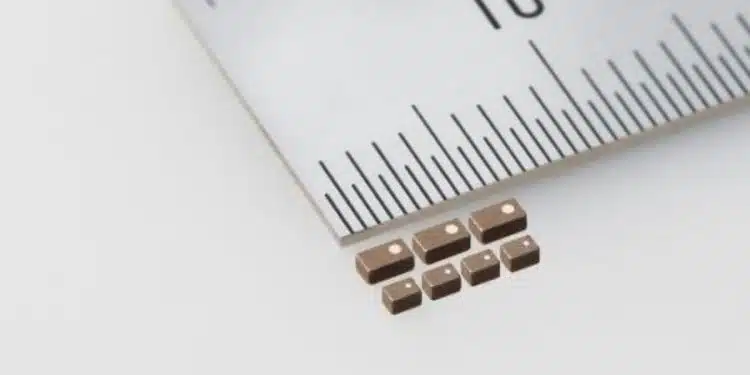TAIYO YUDEN CO., LTD. announced that it has started mass production of three items in two sizes, including the multilayer metal power inductor “LSCND1412HKTR24ME” (1.4 x 1.2 x 0.8 mm. Maximum height value shown) in the MCOIL™ LSCN series.
These products are power inductors for choke coil applications for power supply circuits in smartphones and wearable devices.
“LSCND1412HKTR24ME” is approximately 30% smaller in volume than our existing product “LSCNE2012HKTR24MD” (2.0 x 1.25 x 0.8 mm), and delivers approximately 8% better DC saturation allowable current at 6.5 A (previously 6.0 A).
As smartphones and wearable devices become increasingly sophisticated and multifunctional, our new products will contribute to the miniaturization and higher performance of power supply circuits for these devices.
Mass production of these products commenced in July 2023 at our subsidiary WAKAYAMA TAIYO YUDEN (Inami-cho, Hidaka-gun, Wakayama Prefecture, Japan).
Technology Background
As data volumes continue to grow, smartphones are increasingly becoming multifunctional, with increasingly powerful processors, larger displays, and multocular cameras. Load currents are increasing year by year as processors become more powerful. In addition, greater functionality has resulted in an increase in the volumes of camera-related circuitry and battery. In order to mount components in the limited space inside the chassis, the power supply circuit needed to be made smaller.
Therefore, power supply circuits require smaller and thinner power inductors that are capable of handling high currents. To address these needs, TAIYO YUDEN has been expanding its lineup in the MCOIL™ LSCN series of multilayer metal power inductors which use metallic magnetic materials with high DC saturation characteristics, and provide superior characteristics for achieving miniaturization and thinness.
Included in the three items recently launched to market are “LSCND1412HKTR24ME,” which is approximately 30% smaller in volume than our existing product “LSCNE2012HKTR24MD” and provides an approximately 8% better DC saturation allowable current at 6.5 A (previously 6.0 A), and “LSCND2012HKTR24MF,” which has roughly the same size but with an approximately 17% better DC saturation allowable current at 7.0 A (previously 6.0 A).
In response to market needs, we will continue to expand and improve our product lineup with higher functionality and reliability, as well as smaller and thinner products.
Application
- Choke coils in power supply circuits in smartphones and wearable devices
































